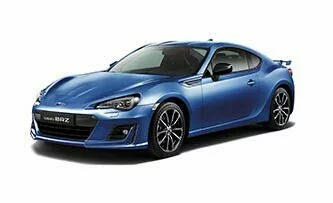THE OUTBACK HAD A LITTLE LAMB
This month we’ve caught back up with Julian Norton, co-star of hit Channel 5 series The Yorkshire Vet. We might have faced some wintery conditions in the UK of late, but it’s been no problem for Julian and his trusty Outback…
“Even though it is still winter, lambing is well and truly underway in North Yorkshire. When ewes get into trouble when giving birth, vets always treat it as an emergency, dropping everything else that is not urgent. Not to say we rush along the wintery roads, but we try not to mess around on the journey. Icy, sometimes snowy, always twisty, the B roads of the county certainly add to the challenges of the job – as well as giving us a bit of fun, too!
So, when I got a call earlier this month to see a Suffolk ewe who was struggling to give birth, I knew both the drive to the farm and the job in hand would be entertaining due to the recent cold spells. I leapt into my Outback, clutching all the extra things I’d need, although my boot was already packed with my usual vet kit, and headed out to help the stricken sheep. The lane up to the farm was long and straight, but up a hill. Amusing and aptly named, the sheep farm where I was heading was called “Sheep Hills”. It didn’t take much imagination to realise that the farm was, indeed, on top of a hill. With ice under my wheels, I tackled the gradient without any problem (of course) and pulled up right outside the lambing pens. At least, when frost was on the ground, the mud was solid and unmoving, rather than tenaciously sticking to my feet and wellies.
“Have we got problems?” I asked the elderly farmer, already looking haggard and tired from too many sleepless nights tending to his flock.
“Yes, we have. It’s this ewe over here. She’s just not getting on with it. And I can’t work out what’s wrong with her,” was the succinct explanation of the situation as he pointed to a ewe lying in the straw yard.
“I’d better have a look. Have you got some warm water, please?” I asked, as usual. I always felt like James Herriot when I said this to a farmer. In the TV programmes from the 1970s, farmers would always greet the vet with a bucket of warm water, a bar of soap and a towel. Nowadays, it’s more common to be pointed in the direction of the cold water trough or a freezing outside tap.
I clambered over a rickety, wooden gate to get to my patient. On one side was the flock, to the other an expanse of frosty grassland, descending into the misty low-lying fields. I rolled up my sleeve, cleaned my hand and arm, and felt inside the ewe. To my glee, the problem was easy to identify: a breech lamb. This is a position where the lamb is pointing backwards, but with its back legs pointing forwards, so the backside and tail are the first thing that can be felt. It can be a difficult lambing to correct under most circumstances, but with careful manipulation, it’s usually fixable without resorting to surgical intervention. It wasn’t long before I’d sorted out the lamb’s legs and soon there was not just one, but two lambs, shaking their heads, lying on the straw, with their mum licking them frantically.
It had been a good job and, after I’d cleaned up and dried my hands, I paused for a moment, leaning on the gate, watching a fastidious mother and new life. Behind her, the view was just as magical, clear skies and frozen fields extending right across to the Dales. All I needed next was to safely negotiate the slippery roads back home. That bit I knew would be straightforward!
But I am never in the warmth and security of the practice for long during the cold months, where there is coffee, radiators and fluffy dogs and cats to warm my hands. Another day sent an even bigger job my way. It was a farm, some distance away- in fact, down the motorway- and I’d already had quite a busy morning. There was a large collection of veterinary tasks ahead of me at this visitor’s farm. A donkey was my first patient. Basil needed a microchip and a passport because he was heading for a new home.
The second patient at the farm was a check-up on a baby llama. Larry had suffered from an injured ear- torn from apex to base which I’d fixed a few weeks ago. The youngster was now looking great: his banana ears looked almost as good as pre-injury.
Thirdly I checked a ram, a male sheep which I’d vasectomised recently. All looked in order.
My final job was to pregnancy test some heifers, a classic job for a large animal vet. I, literally, have to insert my arm inside the rectum of a bovine. It allows a vet to visualise, with the aid of an ultrasound scanner, or palpate (just using our well-trained fingers) the uterus of a cow and detect whether or not she is pregnant. I pulled my car up and alongside the cattle crush so it was easy to get to my equipment.
“Nice car,” said the farmer, and we spent the next ten minutes talking about my Subaru Outback rather than cows. Oh, the life of a Yorkshire Vet!”



